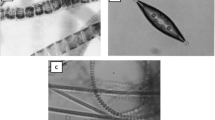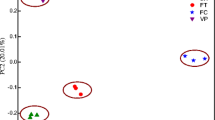Abstract
Vermicompost is considered a good substitute for mineral fertilizers as an agricultural amendment capable of reducing the cost of cucumber production and the degradation of the atmosphere associated with mineral fertilizer. Poultry manure, maize straw, fresh leaves of Gliricidia, and dry leaf litter was collected and processed into vermicompost. Field experiments were performed to determine the potential of vermicompost (VC) for growth yield, proximate analysis, and soil properties and to determine the economic viability of cucumber. Cucumber (VC) (Cucumis sativus L.) were planted under the following organic fertilizers VC at 0, 80, 90, and 100 kgN ha−1, NPK15-15–15 at 100 kgN ha−1and poultry manure at 100 kgN ha−1. Fertilizer treatments were arranged and replicated three times in a randomized complete block design and repeated three times. The outcomes showed that application of VC at 90 kgN ha−1significantly improved cucumber growth and yield compared to the initial application of NPK and residual harvest. Proximate study of cucumber shoot and fruit showed that after comparison with cucumber plots treated with poultry manure, NPK and control, the cucumber cultivated with VC at 90 kgN ha−1 differed significantly at P < 0.05 in P, N, Ca, K, crude fiber, moisture, ash, protein, fat and carbohydrate content. Application of vermicompost significantly improved chemical soil properties and yields of cucumber fruit were significantly related to soil properties. Consequently, the use of vermicompost at a rate of 90 kg N ha−1was economically suitable for cucumber production on the basis of these findings.

Similar content being viewed by others
References
Islam MA, Talukder MS, Islam MS, Hossian MS, Mostofa MG (2018) Recycling of organic wastes through the vermicomposting process of cow dung and crop residues. J Bangladesh Acad Sci 42(1):1–9
`Edwards CA, Norman QA, Sherman R, (2011) Vermiculture Technology. Organic Waste and Environmental Management, CRC Press, Boca Raton, FL, USA, Earthworms, pp 17–19
Arancon NQ, Edwards CA, Bierman P, Welch C, Metzger JD (2004) Influences of vermin composts on field strawberries: Effects on growth and yields. Biores Technol 93:145–153. https://doi.org/10.1016/j.biortech.2003.10.014
Gutiérrez-Miceli FA, Santiago-Borraz J, Molina JAM, Nafate CC, Abud-Archila M, Llaven MAO, Rincón-Rosales R, Dendooven L (2007) Vermicompost as a soil supplement to improve growth, yield and fruit quality of tomato (Lycopersicum esculentum). Bioresour Technol 98(15):2781–2786
Olowoake AA (2017) Nutrient Release Pattern from Compost Supplemented with Jatropha Cake on Alfisol of Ilorin, Nigeria. Int J Plant Soil Sci 15(5):1–11
Oyedele AA, Adelusi OA, Oyedele T (2005) Determination of Aquifer units using the vertical electrical sounding technique: A case study of Federal Low-Cost Housing Estate, Okeho, Southwestern, Nigeria. J Pure Appl Physic 4:60–67
Mbits K, Musa AI (2018) Petrographic and structural analysis of exposed rocks of Musawa Bayero. J Pure Low-Cost Sci 11(1):189–196
Nurhidayati N, Machfudz M, Murwani I (2018) Direct and residual effect of various vermicompost on soil nutrient and nutrient uptake dynamics and productivity of four mustard Pak-Coi (Brassica rapa L) sequences in organic farming system. Int J Recycling Organic Waste Agri 7:173–181
Ngo PT, Rumpel C, Ngo QA, Alexis M, Velasquez Vargas G, Mora Gil Mde L, Dang DK, Jouquet P (2013) Biological and chemical reactivity and phosphorus forms of buffalo manure compost, vermicompost and their mixture with biochar. Bioresources Technol 148:401–407
Bouycocous GJ (1951) Direction for making mechanical analysis by the hydrometer method. Soil Sci 42:225–229
Nelson DW, Sommers LE (1982) Total carbon, organic carbon and organic matter. In: Page AL, Miller RH, Keeney DR (eds) Methods of Soil Analysis Part 2: Chemical and Microbiological. ASA and SSSA, Madison, Wisc pp, pp 539–577
Bremner JM, Mulvancy CS (1982) Total Nitrogen. In: Page AL et al. (ed) Methods of soil analysis part 2, Agron Monogr. 9 (2nd edition) ASA and SSSA, Madison Wsc pp 403–430
Bray RH, Kurtz LT (1945) Determination of total and organic of phosphate in the soil. Soil Sci J 59:45–49
AOAC (1990) Official Methods of Analysis. 15th (ed) Association of Official Analytical Chemists Washington DC, USA.
James CS (1995) Experimental procedures for estimation of major food constituent. Chapman and Hall, New York, USA, pp 71–99
Chang SKC (2003) Protein analysis in food analysis (3rd ed) Khiwer Academic Plenium Publishers New York, USA. pp. 131–142.
Harphool O, Sharma L, Kumar R (1996) Economics of nitrogen and phosphorous fertilization in isabgol (Plantago ovata Forsk). Crop Res 11(2):246–247
Aduloju MO (2004) Acid Extractable Micronutrients (Mn and Zn) in Selected soils of vegetables producing Areas of Kwara State, Nigeria. Nigeria J Horticultural Sci 9:116–199
Adeoye GO (1986) Comparative studies of some extractants for sedimentary soil of South Western Nigeria. Ph.D. Thesis, University of Ibadan, Ibadan. 201pp
Adeoye OA, Agboola AA (1985) Critical level of soil plant available P, K, Zn, Mn, Cu and Mn on maize leaf content in sedimentary soil of Southwestern Nigeria. Fert Res 6:60–71
Joshi R, Singh J, Vig AP (2014) Vermicompost as an effective organic fertilizer and biocontrol agent: effect on growth, yield and quality of plants. Rev Environ Sci Biotechnol. https://doi.org/10.1007/s11157-014-9347-1
Atiyeh RM, Lee S, Edwards CA, Arancon NQ, Metzger JD (2002) The influence of humic acids derived from earthworm-processed organic wastes on plant growth. Bioresour Technol 84:7–14
Fernandez-Luqueno F, Reyes-Varela V, Martınez-Suarez C, Salomon-Hernandez G, Yanez-Meneses J, Ceballos-Ramırez JM, Dendooven L (2010) Effect of different nitrogen sources on plant characteristics and yield of common bean (Phaseolus vulgaris L). Bioresour Technol 101(1):396–403
Lim SL, Wu TY, Lim PN, Shak KPY (2015) The use of vermicompost in organic farming: overview, effects on soil and economics. J Food Sci Agric 95:1143–1156
Ghanbarian D, Youneji S, Fallah S, Farhadi A (2008) Effect of broiler litter on physical properties, growth and yield of two cultivars of cantaloupe (Cucumis melo L.). Int J Agric Biol 10:697–700
Pathma J, Sakthivel N (2012) Microbial diversity of vermicompost bacteria that exhibit useful agricultural traits and waste management potential springerPlus 1:26. https://doi.org/10.1186/2193-1801-1-26
Canatoy RC (2018) Effects of Vermicompost on the Growth and Yield of Sweet Corn in Bukidnon, Philippines. Asian J Soil Sci Plant Nutrition 3(2):1–8
Angelova VR, Akova VI, Artinova NS, Ivanov KI (2013) Effect of organic amendments on soil chemical characteristics. Bulgarian J Agr Sci 19(5):958–971
Brar BS, Singh J, Singh G, Kaur G (2015) Effects of long term application of inorganic and organic fertilizers on soil organic carbon and physical properties in maize-wheat rotation. Agronomy 5:220–238
Fu H, Zhang G, Zhang F, Sun Z, Geng G, Li T (2017) Effects of Continuous Tomato Monoculture on Soil Microbial Properties and Enzyme Activities in a Solar Greenhouse. Sustainability 9:317. https://doi.org/10.3390/su9020317
Acknowledgments
The authors would like to express their gratitude to the Tertiary Education Trust Fund (TETFUND) and Kwara State University Management, Malete, Ilorin, Nigeria, for providing the research fund.
Funding
This study was funded by a grant from Tertiary Education Trust Fund (TETFUND), Nigeria. Tertiary Education Trust Fund, KWASUTETFUND 2017–1, Olowoake Abayomi Adebayo, KWASUIBR/CSP/090320/VOL7/TETF2019/0087, Olowoake Abayomi Adebayo
Author information
Authors and Affiliations
Contributions
All the authors contributed to the definition and design of the report. [OA], [WA], [LO], and [SS] were involved in content planning, data collection, and analysis. [OA] wrote the first draft of the manuscript and all the contributors reflected on past versions of the manuscript. The final manuscript was read and accepted by all the contributors.
Corresponding author
Ethics declarations
Conflict of interest
The authors declare that they have no conflict of interest.
Additional information
Publisher's Note
Springer Nature remains neutral with regard to jurisdictional claims in published maps and institutional affiliations.
Significance Statement Vermicompost enhanced the growth, yield of cucumber and improved the physicochemical properties of soil.
Rights and permissions
About this article
Cite this article
Olowoake, A.A., Wahab, A.A., Lawal, O.O. et al. Assessing the Potential of Organic Wastes through Vermicomposting: A Case Study with Cucumber (Cucumis sativus). Proc. Natl. Acad. Sci., India, Sect. B Biol. Sci. 92, 131–140 (2022). https://doi.org/10.1007/s40011-021-01321-3
Received:
Revised:
Accepted:
Published:
Issue Date:
DOI: https://doi.org/10.1007/s40011-021-01321-3




